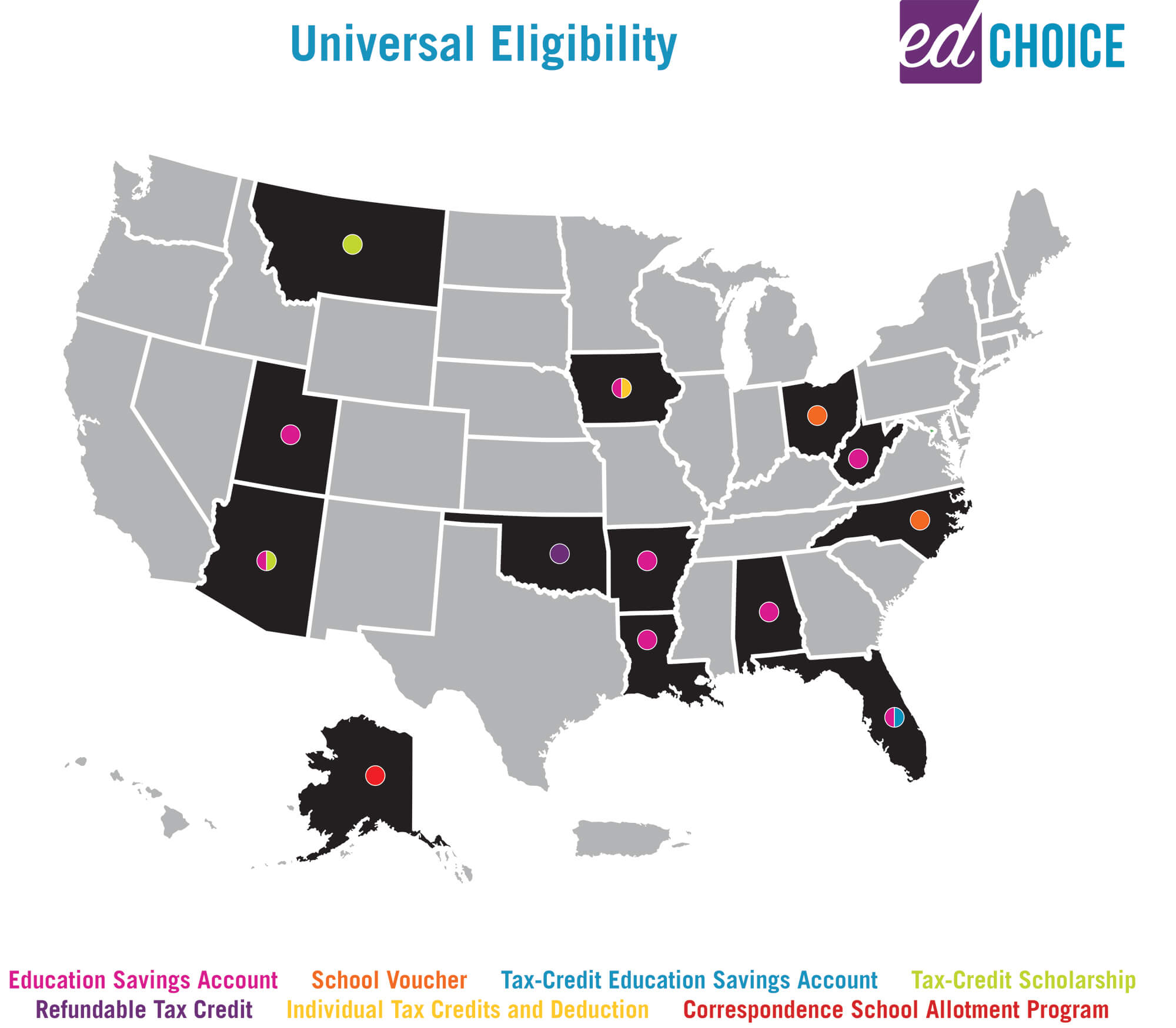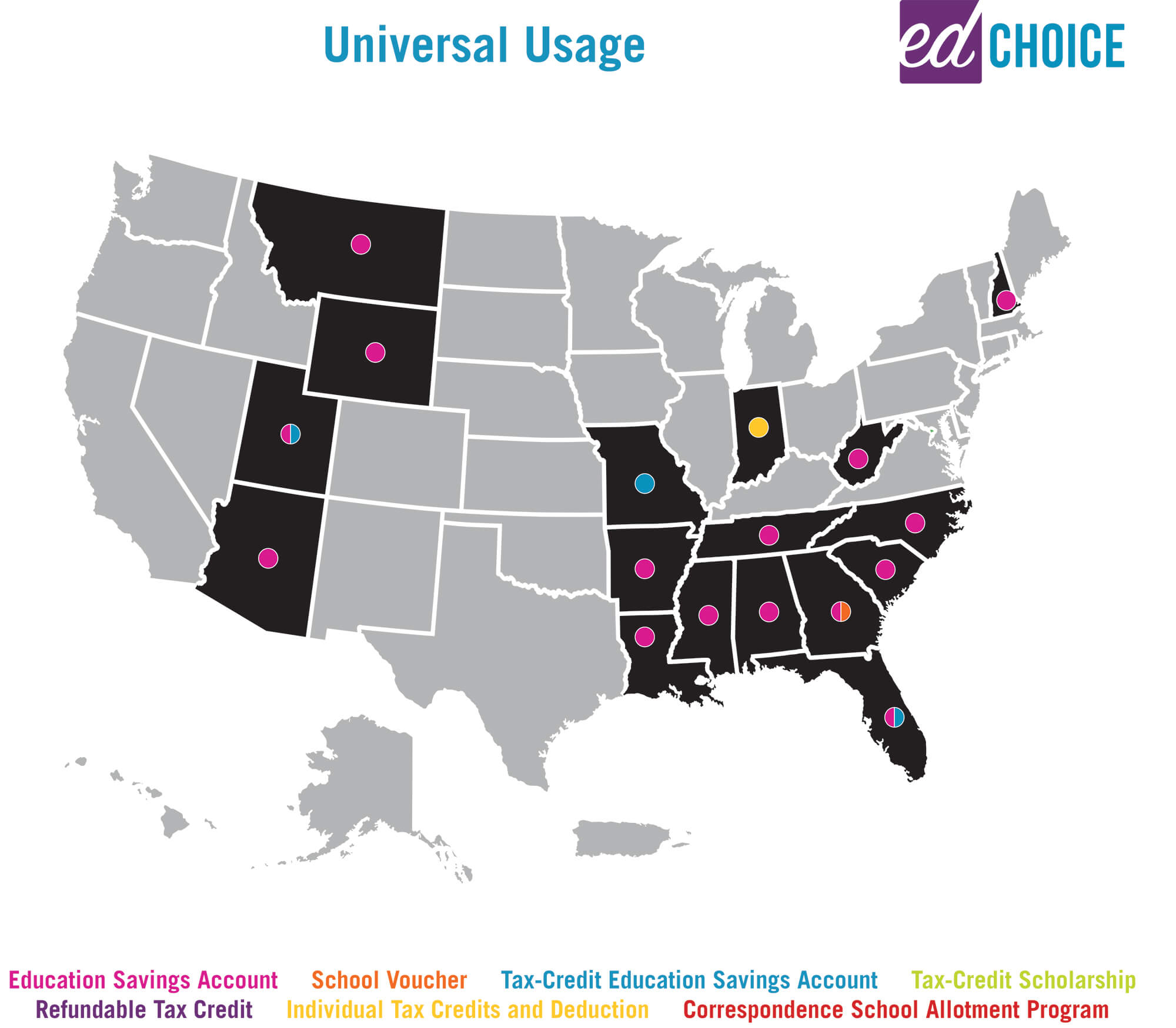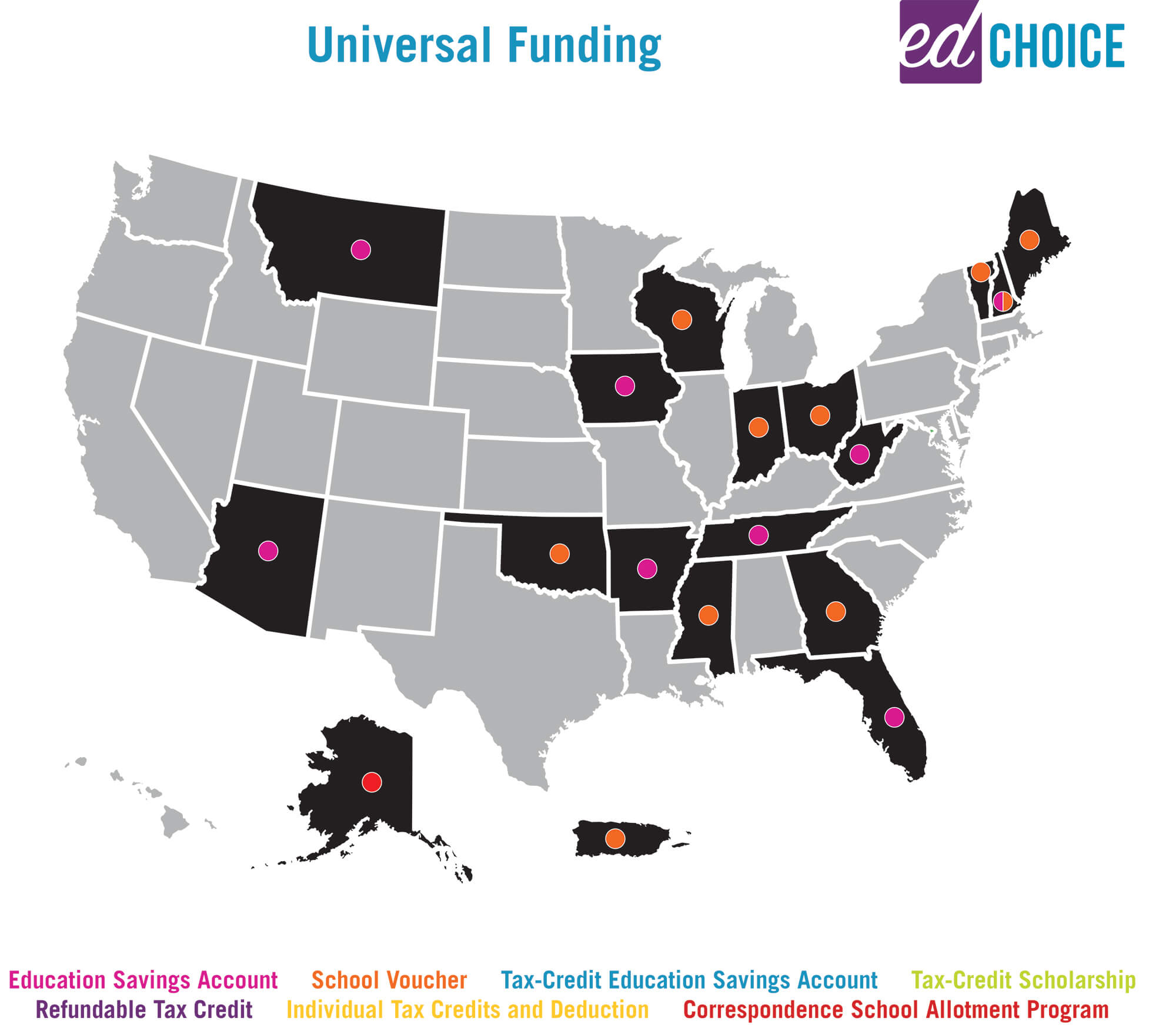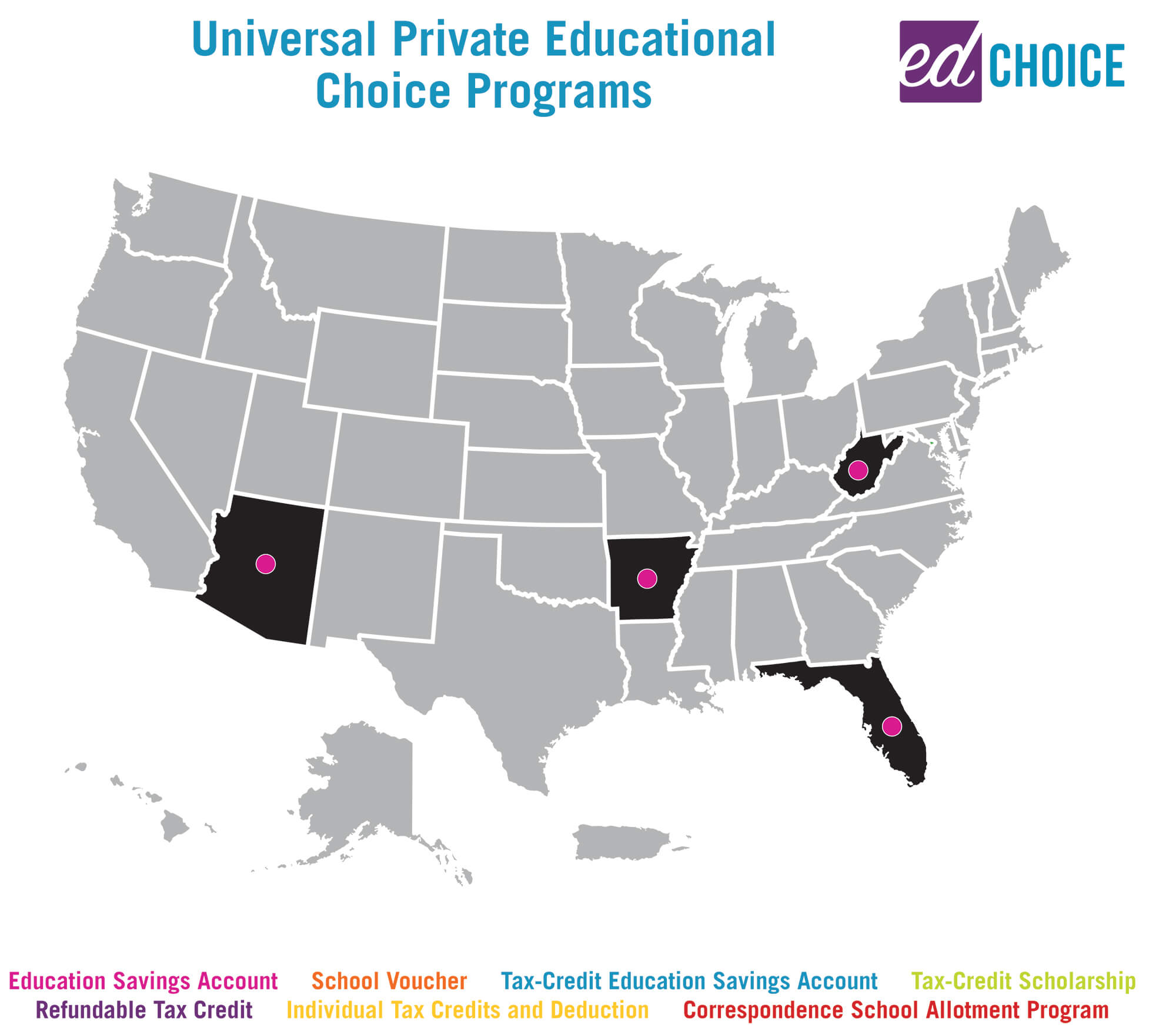
Just over three years ago, zero states offered universal educational choice. Today, 13 states offer programs like school vouchers or education savings accounts (ESAs) that are open to all students. This undoubtedly manifests a parent-led education revolution, but there is a conundrum. While many of these states have programs with universal eligibility, students are still being waitlisted. It is time for state lawmakers to truly embrace what it means to have a universal educational choice program.
North Carolina is a great example of this conundrum. The state’s Opportunity Scholarships program meets the threshold for universal eligibility—there are no limitations for participating based on family income, public school performance, special education designation, or anything else. But, rather than guaranteeing funding for all qualified students and allowing all to enter, the program allots a set amount to each eligible member based on need until the funding is fully spent. Last year, when the program was broadened to offer universal eligibility, it was funded with an appropriation of about $176.5 million for the first fiscal year, with a $15 million annual escalator, bringing the appropriation to about $191.5 million for fiscal year 2024–25. The law was written to include a jump in funding to $415.5 million for fiscal year 2025–26, with the $15 million escalator continuing until fiscal year 2031–32.
While all K–12 students now qualify, once enough students are accepted to meet the funding cap, no more may be admitted. Today, a whopping 55,000 students (approximately) are on the program waitlist—more than the number of students currently participating.
Luckily for those on the waitlist, the state just took a positive step to allow more families to participate. According to The Carolina Journal, legislation passed this month appropriates an additional $248 million in nonrecurring funds for this school year and $215.15 million in recurring funds. The new nonrecurring funds will immediately fund all current waitlist applicants, and the new recurring funds will help incrementally bring the cap to $800 million by 2031.
This is welcome news, but it doesn’t solve the underlying problem of a program solely meeting the threshold for universal eligibility, especially with increasing demand for choice. There will likely be more students who must be wait-listed in future years, and those students will be at the mercy of whether the state legislature appropriates enough funding for them to participate. Last year’s legislation propelling the program to universal eligibility became law without the support of Governor Roy Cooper when he allowed the legislation, an omnibus bill, to become law without his signature, with a likely veto override looming. Last week, Cooper vetoed this month’s legislation. The legislature is expected to convene later this year to override his veto, and it will depend on a one seat House supermajority if no Democrats join Republicans in the vote. Future expansions of the program are uncertain and will depend on the political makeup of the state house and governor’s mansion.
North Carolina is not alone. In 2023, Utah enacted a program with universal eligibility but appropriated just $40 million for scholarships, meaning only 5,000 students could be funded by the program’s start. In a similar fashion, Utah took a positive step to include more students this year, doubling the appropriation and, with it, the number of funded eligible students. Still, the moment more students apply than the program is funded for, more students will be wait-listed.
The Tar Heel State falls short in another pillar of universality: universal usage. Instead of creating an ESA program to achieve universal eligibility, like so many other states have done in recent years, North Carolina has expanded an existing voucher program. And while this is a positive step, voucher programs are more restrictive, generally only allowing families to use funds on private-school tuition. Meanwhile, ESAs allow families more flexibility in how scholarship funds are spent.
In the age of universal choice, with over a million students participating in choice programs nationwide, getting the details right can mean the difference between thousands of families getting a scholarship or not. It is therefore imperative for lawmakers to understand the three pillars of universality, which my colleagues and I at EdChoice have broken down:
Pillar #1, Universal Eligibility: Every student in the state must qualify for the program. To be fair, many states have cleared this bar. While in the past programs were limited to low-income students or students with special needs or students assigned to particular districts or schools, states have moved to create broad-based programs that everyone in the state qualifies for. Thirteen states have enacted programs with universal eligibility.

Educational choice programs with universal eligibility have seen a recent surge in popularity among lawmakers. To be considered a program with universal eligibility, all K–12 students in a state must qualify for participation by statute.
Pillar #2, Universal Usage: All participating students may use scholarship funds on a wide range of qualifying expenses. Universality isn’t just about the who but also the what. If program participants are limited in what educational options they can choose—for example, many states only allow funds to be used on private-school tuition—lawmakers are hamstringing these programs from expanding the educational landscape for families. Scholarships should be allowed to be spent on tutoring, special education therapies, educational technology, enrichment activities, and more. Seventeen states have enacted programs with universal usage.

Universal usage is determined by how broadly families can use funds from choice programs. Is the program solely for private school tuition or are families empowered to choose a wide array of schools and educational services and products? Generally, Education Savings Accounts have more broad use of funds. Universality was measured by reviewing the 15 most common uses for qualified expenses among programs. Tuition first models were excluded.
Pillar #3, Universal Funding: Every qualifying student is guaranteed funding. For a program to achieve universal funding, it must not come from an annual or biannual appropriation. Instead, the source of funding must be consistent and sustainable and provided through the state’s funding formula, education budget, or general revenue stream. Seventeen states and Puerto Rico have enacted programs with universal funding.

Programs considered universally funded are those that are not an annual or biannual appropriation. The source of funding is consistent and sustainable and provided through the state’s funding formula, education budget, or general revenue streams.
Four states have programs meeting all three pillars: Arizona, Arkansas, Florida, and West Virginia. Lawmakers and advocates should look to these states as models for what true universal educational choice looks like and keep working until all three pillars are achieved.

Just four states achieve the three pillars of universality and therefore meet the standard for having universal educational choice.
Turning to Arizona as an example, the Empowerment Scholarship Accounts Program has exploded in participation since being taken to universality in 2022. The number of participating students swelled from about 12,000 in 2022 to more than 76,000 for the 2023–24 school year, with over 400 approved education providers. As of this year, 9.2 percent of all Arizona students are participating in educational choice programs—the second highest in the nation, behind only Florida. Meanwhile, 68.7 percent remain in traditional public schools, 18.4 percent are in public charter schools, 3.4 are homeschoolers, and 0.3 percent are private school students not participating in a choice program.
Milton Friedman once said, “A far more effective and equitable way for government to finance education is to finance students, not schools.” The work toward this vision is not complete at universal eligibility. To achieve a system where every family may seek an education best fit for their needs, states must ensure that every family can direct the public education funding for which they’re eligible to optimize their children’s schooling experience.
Ed Tarnowski is a policy and advocacy director at EdChoice, the legacy foundation of Milton and Rose Friedman and host of the State of Choice Podcast.


